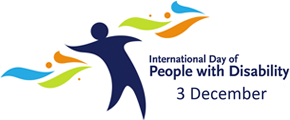 On the International Day of Persons with Disabilities, CBM (Christian Blind Mission) is reminding churches that inclusiveness for people with disabilities is more than just being friendly.
On the International Day of Persons with Disabilities, CBM (Christian Blind Mission) is reminding churches that inclusiveness for people with disabilities is more than just being friendly.
CBM runs the Luke14 initiative to encourage churches to welcome and include people with a disability through training and program resources. The organisation commissioned questions in the recent National Church Life Survey (NCLS) to develop benchmarks on church inclusiveness for people with disabilities.
Data from the NCLS suggests that people with a disability make up eight per cent of the Australian church, a significantly lower percentage than the 18 per cent of Australians overall living with a disability.
Heath McSolvin, director of communications at CBM says there’s a reason for the discrepancy. “People with a disability are often a marginalised group, an excluded group. That happens in churches as well, even if we don’t realise we’re doing it.” The fact that just over 50 per cent of Christians who took part in the NCLS said they had no connection to anyone with a disability is also, potentially, part of the problem.
“We estimate that in society as a whole, about half don’t have any interaction with a person with a disability. So, it’s not surprising that that’s the case among Christians too. But just because it’s not surprising, doesn’t mean it’s right.”
He challenges churches to think about how they’re serving the people with disabilities in their church, and if they don’t have anyone with a disability in their congregations, to ask why.
“There are always people in the community with disabilities. So, if we don’t have any people with disabilities in our church, perhaps we’re not talking and involving ourselves enough in the community. A strong, well-functioning church is representative and inclusive of the whole community, including people with disabilities.”
McSolvin lists physical accessibility as an obvious barrier for many people with disabilities – lack of stairs, railings, easy access to toilets. But while NCLS data suggests that 75 per cent of churches now have major physical facilities for people with disabilities, there are plenty of other possibilities for exclusion in the church for those with disabilities.
For example, says McSolvin, “Worship time, where everybody is standing. If you’re unable to stand, you may feel excluded by that. Little things all add up. People in a wheelchair are often placed in a different part of the church to others, or people with a hearing impairment sit in a particular place. There’s a natural segregation, and we need to find ways of fostering better inclusion.”
McSolvin says he expects most churches would say they were ‘inclusive’ and ‘open’ to people with disabilities in their services, but what inclusion looks like to someone without a disability and what it really should look like are two very different things.
“It’s why including [people with disabilities] in the decisions being made in church is so vital. The best way to make the disability voice louder in church is the concept of ‘nothing about us without us’.”
“If I could choose one thing that the church does to promote inclusion,” says McSolvin, “I would have someone with a disability in a senior role in church.”
Email This Story
Why not send this to a friend?
